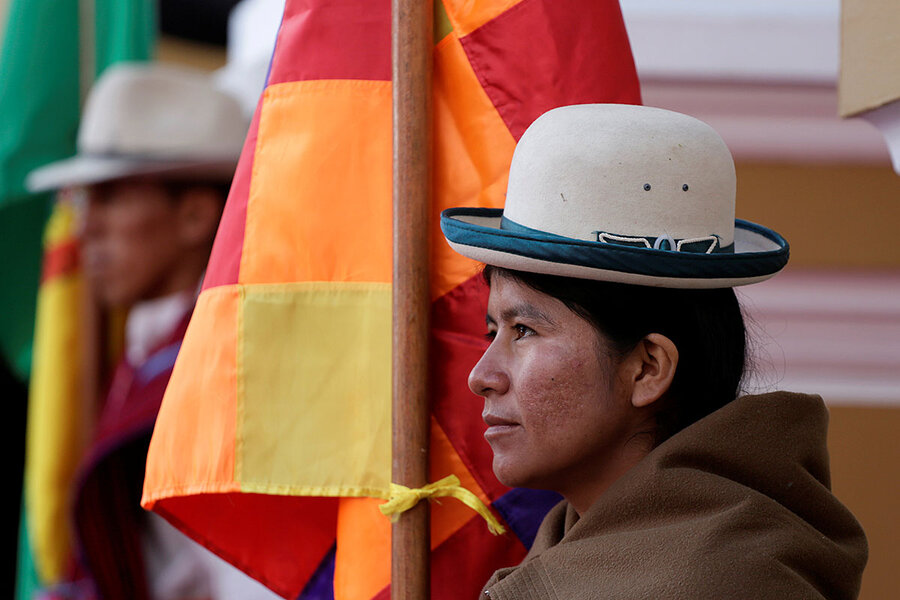Is Latin America's 'pink tide' turning?
Loading...
A version of this post ran on LatinAmericaGoesGlobal. The views expressed are the author's own.
Much has been made of the end of the so-called pink tide in Latin America. Socialism is collapsing under its own weight, and the right – referring specifically to a commitment to free markets – is getting another turn. For the right, this is a source of celebration. For the left, it spurs dire warnings.
It is popular to argue that this simply reflects a political pendulum that affects economic policy. The right held sway in the late 1980s until the mid-to-late 1990s, the left solidly through the first decade of the 2000s, and now the right is back. But that binary approach tends to obscure the popular pressures leaders on both the left and right currently face.
Instead, for the most part what we’re seeing are muddled shifts toward the middle, or what we might call bounded or limited ideology: Leaders that move too far one way or the other face pushback. Latin Americans are pragmatic and many do not want their leaders exclusively embracing orthodox economic policies. They prefer an a la carte menu.
The Left leans Right
In Bolivia, President Evo Morales rails against the evils of capitalism almost as loudly as Venezuela's former President Hugo Chávez ever did. But he has been fiscally prudent, saving during the commodity boom, running budget surpluses, and increasing reserves while reducing poverty. Even within his own party, the Movement Toward Socialism, he is dealing with difficult trade-offs with mining cooperatives, which limit how far he can dictate mining policy.
Chile has been a strange mix for years, a market-oriented economy run by self-proclaimed socialists. It is a country dedicated to limited government involvement in the economy, but also where the private pension funds – long the hallmark for free marketeers – are under fire across the political spectrum. Former President Sebastián Piñera, who is also a top candidate to run in November 2017, admits that the government must remember that the middle class is fearful about losing its pensions, healthcare, and even its jobs.
Before she was ousted, Brazilian President Dilma Rousseff was calling for austerity policies such as spending caps and cuts in pension benefits. But 21st century austerity still requires maintaining large social programs. President Michel Temer successfully pushed through a constitutional amendment to cap spending, but left key social welfare programs like Bolsa Familia untouched (though certainly vulnerable).
The Right leans Left
It might be tempting to think that if leftists are sometimes acting like libertarians, then “neoliberal” orthodoxy must have triumphed. But that’s not true either.
In Colombia, the center-right government of President Juan Manuel Santos approved a tax measure intended to help pay for social programs generated by the peace agreement with the Revolutionary Armed Forces of Colombia. That comes at the same time as the country is seeing increased exports through free trade zones: Free trade and increased spending can co-exist. That’s also the case in Guatemala, where President Jimmy Morales – who was widely seen as a conservative lackey when elected – received credit from the left for his attention to providing free medicine to the public.
When the Right tries to stay Right
In Mexico, the Institutional Revolutionary Party (PRI) first emerged in the 1920s as the protector of the revolution and then presided over the nationalization of oil in 1938. Now, a PRI government faces major protests as it loosens regulations and gas prices rise. The 2017 budget is austere and the government is dealing with serious backlash as a result, to the point that the opposition Democratic Revolutionary Party has been energized and its former leader, Andrés Manuel Lopez Obrador, may very well be coming out of the political wilderness.
In Argentina, President Mauricio Macri has pushed fiscal belt tightening over the past year. He replaced Finance Minister Alfonso Prat-Gay – after Argentina failed to come out of recession in 2016 – with Nicolas Dujovne, a fiscal hardliner. Protests increased in late 2016. Mr. Macri’s honeymoon is coming to a close, and he will likely face pressure to ease back on his austerity measures. Argentina has important legislative elections in October 2017 that will show what Argentines think of his efforts and whether he can maintain course or is forced to adjust.
And when the Left tries to stay Left
Finally, Venezuela, the paragon of 21st century socialism, is now primarily a kleptocracy. Amidst hyperinflation, the government is issuing higher denomination bills in a confused process of currency replacement. Rank-and-file chavistas feel their government has forsaken them.
In sum, the region is not experiencing a pendular shift back to the late 1980s and early 1990s, when unfettered capitalism was dominant and there was ample political space for free market experiments. These days, presidents who try to recreate that era do so at their own political risk, and there is no such thing as being exclusively on the right or the left: Presidents elected from across the spectrum are left to convince the public that they are the best suited to balancing calls from both sides in this new world of limited ideology.
Gregory Weeks, PhD, is chair of the Department of Political Science and Public Administration at the University of North Carolina at Charlotte. He is editor of the academic journal The Latin Americanist, and he is the author of numerous books and articles. He blogs regularly on Latin American politics at Two Weeks Notice.







